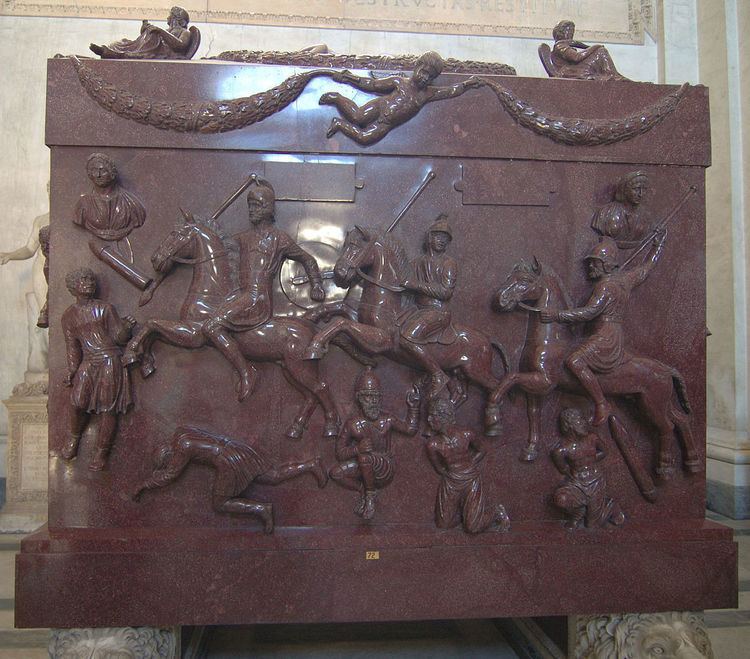 | ||
The Sarcophagi of Helena and Constantina are two fourth century porphyry sarcophagi in Rome.
Contents
Sarcophagus of Helena
The Sarcophagus of Helena is the red porphyry coffin in which Saint Helena, the mother of emperor Constantine the Great, was buried (died 329). The coffin, deprived of it contents for centuries, was removed from the Mausoleum of Helena at Tor Pignatarra, just outside the walled city of Rome, and ultimately moved to the Vatican museums in the 18th century, and now is in the Sala a Croce Greca of the Pio-Clementine Vatican Museum.
The Sarcophagus is carved in the Egyptian porphyry, used only in the finest Byzantine imperial monuments. It is noted that the carved imagery depicts victorious Roman Cavalry riding above captured barbarians. It is unclear if such imagery was intended for the sarcophagus of a highly religious Christian woman, or whether the coffin was repurposed for her burial.
Sarcophagus of Constantina
The Sarcophagus of Constantina is in the same room as a second porphyry work that once housed the body of Constantina, daughter of Constantine the Great (died 354), which was once in her mausoleum on Via Nomentana, which became the church of Santa Costanza in 1254, and later to this museum. The decoration is a semi-pagan depictions of cupids in Dionysic harvesting of grapes to make wine; it has been interpreted as an early Christian reference to the eucharist.
